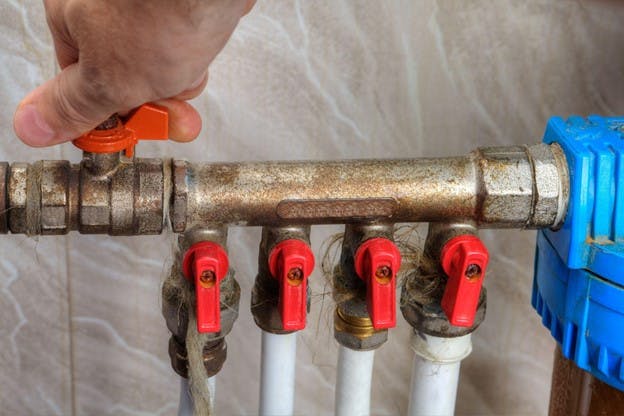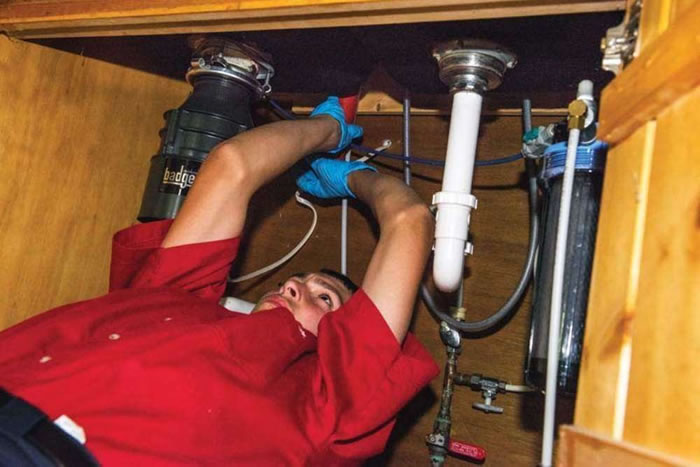Are you currently searching for ideas concerning 4 Ways to Troubleshoot Low Water Pressure?

Low tide pressure in your home can be an aggravating trouble, influencing everything from bathing to washing recipes. If you're experiencing weak water flow, there are a number of possible reasons and solutions to explore. In this overview, we'll discuss typical factors for low water stress and practical steps to resolve the issue successfully.
Intro to Low Water Pressure
Low water pressure occurs when the circulation of water from your taps, showers, and other components is weaker than common. This can make daily tasks extra tough and much less efficient. Comprehending the reasons for low tide pressure is crucial to discovering the right service.
Typical Reasons For Low Tide Pressure
Faulty Pressure Regulators
Stress regulatory authorities are responsible for keeping regular water stress in your home. If they malfunction, it can cause low water stress or irregular flow throughout your home.
Local Water Issues
In some cases, the problem lies outside your home. Community water system issues, such as main line leakages or maintenance job, can temporarily lower water pressure in your area.
Pipeline Obstructions
With time, pipelines can come to be blocked with mineral deposits, sediment, or debris, limiting the flow of water. This is a common concern in older homes with galvanized steel pipes.
Rust
Deterioration within pipelines can bring about leaks and minimized water pressure. Corrosion accumulation can tighten water flow, particularly in aging plumbing systems.
Just How to Diagnose Low Tide Pressure
Examining Pipes
Inspect visible pipelines for signs of leaks, corrosion, or obstructions. Pay attention to any kind of unusual sounds, such as knocking or rattling pipelines, which might indicate issues within the plumbing system.
Consulting with a Plumber
If you're unable to determine the reason for low tide stress, think about hiring a specialist plumber to carry out a detailed evaluation. They can identify underlying problems and suggest proper services.
Checking Taps and Fixtures
Begin by checking the water stress at various faucets and components throughout your home. If the problem is isolated to certain locations, it may suggest local troubles.
DIY Solutions to Fix Low Water Pressure
Flushing Water Heater
Debris accumulation in the hot water heater can restrict flow and decrease performance. Purging the container occasionally helps get rid of debris and maintain ideal efficiency.
Inspecting Pressure Regulator
Guarantee that the pressure regulator is working correctly. Readjusting or replacing the regulatory authority can assist bring back proper water stress throughout your home.
Cleaning Up Aerators and Showerheads
Mineral deposits can collect in aerators and showerheads, decreasing water flow. Remove and clean these elements frequently to enhance water stress.
Cleaning Clogs in Piping
For minor obstructions, try making use of a plumbing serpent or chemical drain cleaner to clear obstructions in pipelines. Beware when using chemicals and follow security standards.
When to Call a Specialist Plumber
If do it yourself efforts stop working to solve the problem or if you believe significant plumbing issues, it's best to seek assistance from a qualified plumber. They have the competence and tools to address complicated concerns safely and efficiently.
Preventive Measures to Keep Water Pressure
Installing a Pressure Booster
Take into consideration mounting a stress booster pump to improve water pressure in locations with constantly reduced flow. This can be especially helpful for multi-story homes or properties with high-demand fixtures.
Surveillance Water Usage
Be mindful of water usage routines and stay clear of ill-using the plumbing system. Basic adjustments, such as astonishing showers and washing tons, can assist preserve ample water pressure.
Routine Upkeep
Arrange regular maintenance for your plumbing system to avoid problems such as corrosion, leaks, and obstructions. Resolving minor problems early can assist prevent more substantial fixings later on.
Conclusion
Dealing with low water pressure can be frustrating, yet recognizing the underlying causes and applying proper solutions can recover optimal circulation throughout your home. Whether it's cleaning aerators, checking pipes, or seeking advice from a plumber, taking positive steps can ensure a constant supply of water for your day-to-day demands.
FOUR WAYS TO FIX LOW WATER PRESSURE NOW
Turning on a shower or faucet only to find the water comes out in a sad, slow drizzle is never a good feeling. How exactly are you supposed to wash a pan or take a quick shower when it takes 10 minutes just to rinse off a little soap? The good news is that when your water pressure is bad, there's always a cause: typically one that can be easily fixed. Here are some of the most common causes of low pressure and what you can do to fix the issue:
DEBRIS AND MINERAL DEPOSIT BUILDUPS
If you notice low water pressure from just one or two of the fixtures in your house, the problem likely has to do with debris buildup. Water is full of minerals and other debris, all of which can accumulate in your pipes and on your fixtures. This can cause a blockage that affects how much water flows through. To fix this, try filling a small plastic bag with white vinegar, and use a rubber band to hang it around your showerhead or faucet. Let the head of the fixture soak for a few hours, and the vinegar should loosen the deposits.
WATER LEAKS
Leaks are another common cause of low water pressure. If water is flowing out of your plumbing through a hole or crack before it can reach your fixture, the pressure coming out of the faucet or showerhead will be lower. A plumbing professional is your best bet for finding and repairing a leak in your water supply pipes.
Leaks are another common cause of low water pressure. If water is flowing out of your plumbing through a hole or crack before it can reach your fixture, the pressure coming out of the faucet or showerhead will be lower. A plumbing professional is your best bet for finding and repairing a leak in your water supply pipes.
A VALVE ISSUE
If you have low water pressure throughout your home, check your main shut-off valve to make sure it's completely open. You may also want to see if there's a pressure-reducing valve installed. If there is, have a plumber help you adjust the settings to get the pressure you're looking for.
OTHERS USING WATER
Believe it or not, your low water pressure could be caused by your neighbors. If you notice low pressure at certain times of day, it may be because you and the people living next to you have similar schedules - when everyone is showering at the same time, the pressure will be lower in every home. Low pressure throughout the neighborhood may also be caused by an issue with your municipal water supply. If that's the case, call the supplier to see if they're working on the issue.
https://www.rotorooter.com/blog/water-leaking/low-water-pressure-fixes/

Hopefully you enjoyed reading our part about Low Water Pressure in the House?. Thank you so much for taking the time to browse our short article. Enjoyed our posting? Please quickly share it. Help another person find it. Bless you for being here. Kindly check up our blog back soon.
Get Quote Now